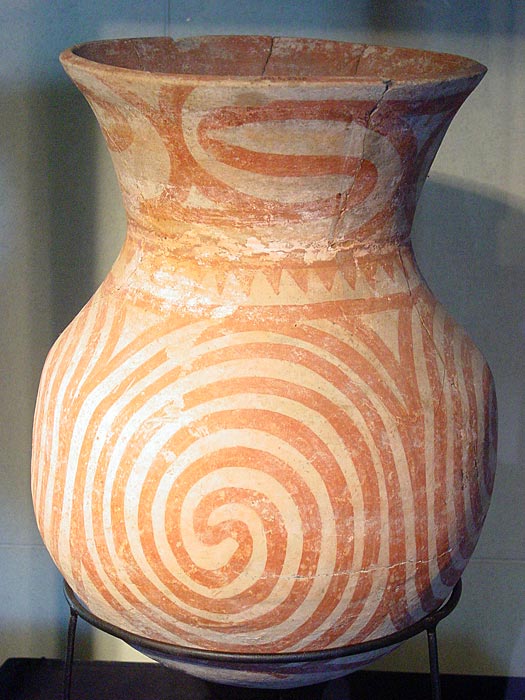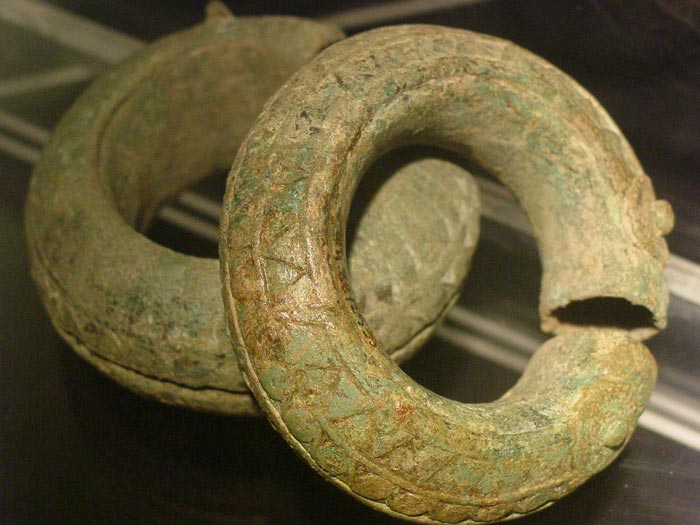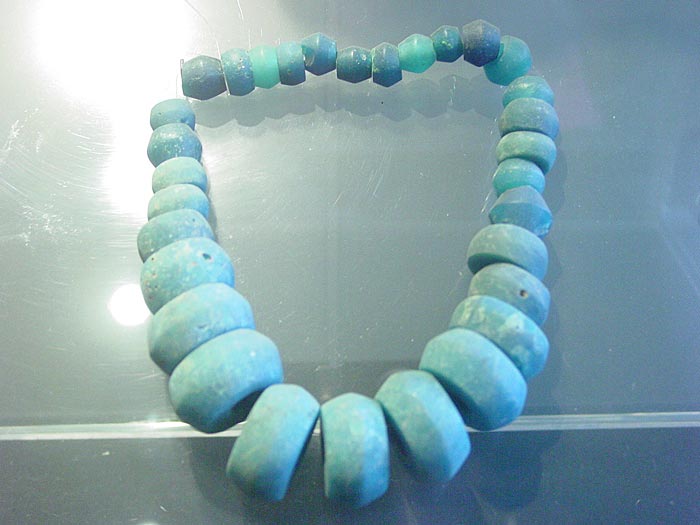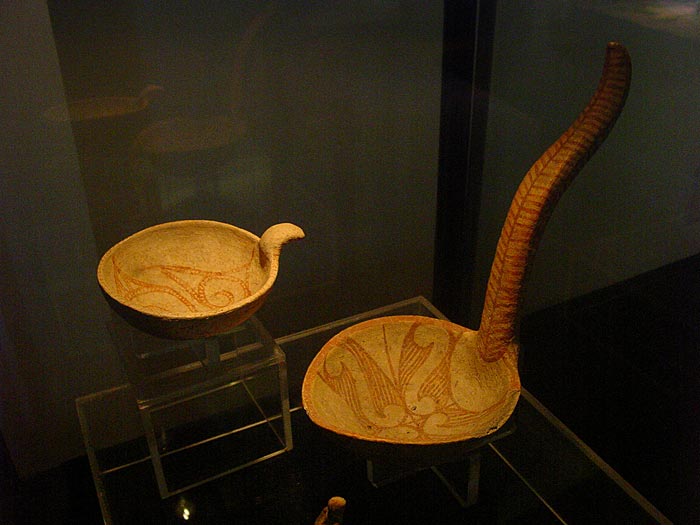Ban Chiang Settlements and Culture
Relatively unknown, Thailand is also on the map as a place of early prehistoric development. A much researched site is the Ban Chiang area, close to Udon Thani, Northern Thailand.
Prehistoric settlements in Thailand before Ban Chiang were found mostly along the great rivers. These rock shelter and cave dwellers were hunter-gatherers.

Ban Chiang pottery looks astonishingly modern.
About 5600 years ago prehistoric settlements emerged in the vicinity of Ban Chiang, in present day Udon Thani province, Northern Thailand. These settlements were intially located on low to middle terraces of main and tributary streams, particularly where two streams converged with fertile alluvial soils. In nearby streams and ponds were a variety of marine fauna, whereas the surrounding dry deciduous forests were rich in game of all sizes.
Located on mounds, the early settlements were relatively small. The wooden houses were built on stilts. Later, about 3000 years ago, larger villages were settled on flood plains and on the tracts of land between the flood plain and low terrace.

Ban Chiang : 'bangles'
Sherds of painted ceramic ware were discovered by chance by villagers around 1957 and displayed at the village school. In 1960, some of these sherds were presented to the department of Fine Arts, but a serious study was only attempted from 1966. It confirmed that they indeed belonged to a distinctive prehistoric culture. Subsequently, public interest in Ban Chiang antiquities gained momentum.
During 1974-75, the Department of Fine Arts and the University Museum, University of Pennsylvania, jointly conducted the Northeast Thailand Archaelogical Project (NETAP), a major systematic, in-depth, multi-disciplinary archaeological research programme in northeastern Thailand with extensive excavations at Ban Chiang.
The people who developed Ban Chiang Culture were most likely inigenous groups who successfully turned their way of life from hunting-gathering to agriculture. Most of the remains indicate no violent causes of death, a testimony to the relatively peaceful life of preistoric Ban Chiang.

Ban Chiang : Ornaments
Ways of Life and Social Relations
Agriculture.
From the beginning ca 5600 years ago, the prehistoric village settlements at Ban Chiang engaged in wet swidden rice cultivation in swamp land and raised livestock, such as cattle and pigs, as well as dogs for companionship. They still maintained their hunting-gathering way of life in nearby forests and streams. Wet rice cultivation in irrigated land and the domestication of buffalo for ploughing the paddy fields were introduced about 3000 years ago.
Material Culture.
Ceramics technology was known to these prehistoric settlements form the very beginning. Its manufacturing technique, form and decorative designs were constantly and continuously developed and refined until the abandonment of the settlements some 1800 years ago. The casting of bronze tools, weapons and ornaments was widely practised sometimes before 3000 years ago. The making of iron tools was introduced around 2700 years ago. Ropes, mats and baskets were also made from the earliest period, but textile technology began probalby 3000 years ago in conjunction with bronze technology.
Social Structure.
Though basically rice growing village settlements,there existed various groups of silled crafsmen other than rice farmers, such as potters, bronze and iron smiths, basket and textile weavers, due to the highly developed material culture.
The Ban Chiang culture did not transform itself into urban towns or a centralized state based on expansionism. Trade and exchange with distant communities existed as early as 4000 years ago.

Ban Chiang culture : 'kitchen utensils'.
In Bangkok, you can visit the pleasant museum of Suan Pakkad. It is located close to the skytrain Phayathai Skytrain station. Images displayed here are all from that museum.
Website : www.suanpakkad.com
There is also a National Museum at Ban Chiang, 50 km East of Udon Thani. We did not visit this museum (yet), but it reportedly has extensive Ban Chiang exhibits.

